Darkening the hair roots. Ombre for blonde hair of any length
The ombre coloring technique was first used in 2009. Since then, this type of coloring has been at the peak of popularity. Its essence is that the ends of the hair are painted in a lighter tone. Therefore, ombre is also called the effect of burnt hair. Looks especially good on dark hair Oh. Here you can practice and show the entire palette of tones, using smooth transitions from dark to light.
The advantages of this technique are that the hair looks more voluminous due to light tones, this technique emphasizes the shape of the haircut, well-chosen colors highlight and refresh the face. Therefore, ombre is stylish, expensive and elegant.
The cost of the procedure in beauty salons and hairdressers is quite expensive. The price depends on the length of the hair, the length of the ends that you are going to shade, the amount of dye and its cost for transitions. This cost includes washing and drying the hair, the use of conditioner and shampoo.
Today technology offers a lot of options: for long and short hair, with smooth transitions or individual horizontal lines different colors, with colored tips of different lengths. In general, every fashionista will be able to express herself and find her own style.
Ombre is done in four ways:
1. Classic ombre. With this method of dyeing, the ends of dark hair have a burnt-out appearance. As a rule, 2 tones are used: natural and a color 3-4 tones lighter than the main one. As pictured in photo 1 .
2. Ombre with the appearance of regrown roots. At the same time, the hair in the temporal part is dyed in a light tone. An example of coloring using this method is the model in photo 2.
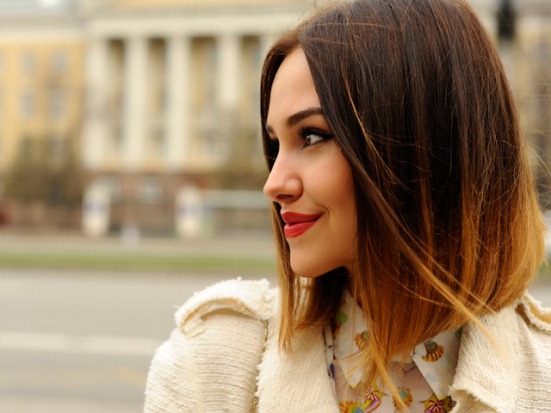
3. A game of contrast. The hair is dyed in bright colors with a clear demarcation line. Often when painting, choose red and purple colors. Keep in mind that red suits young people and winter-type women. This type of staining is presented in photo 3.
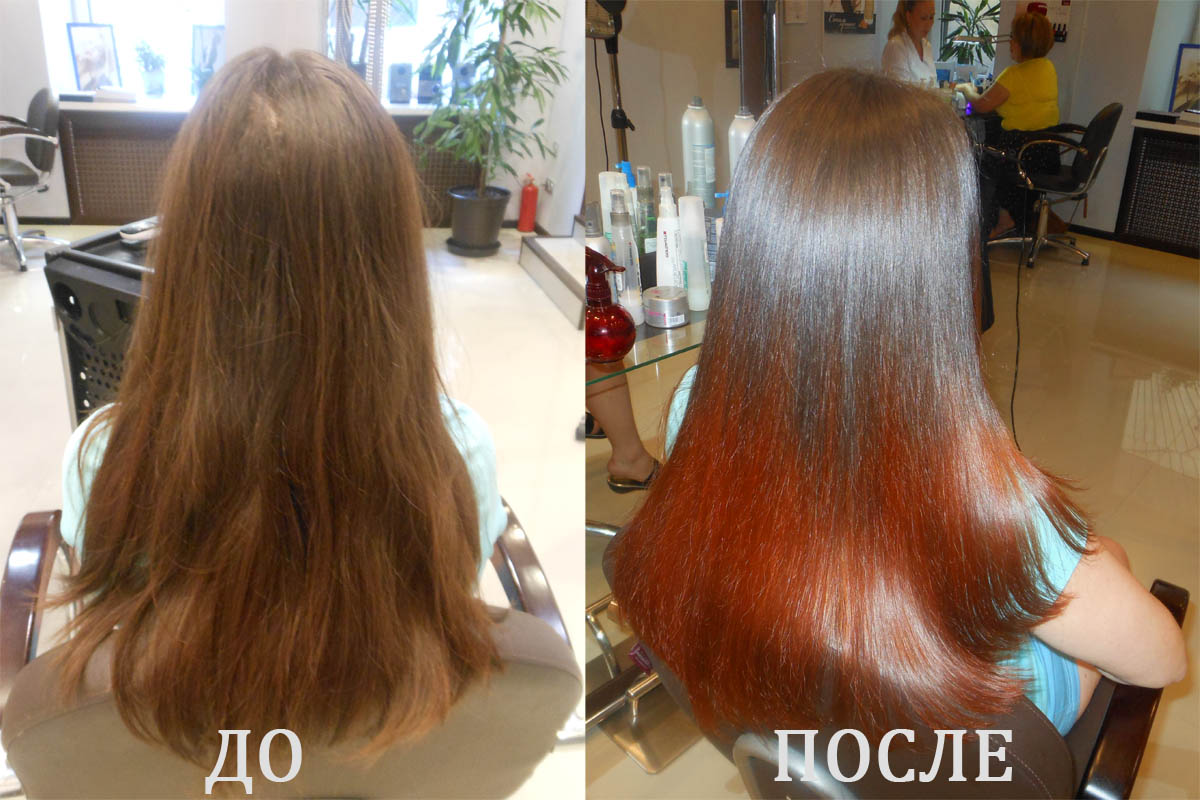
4. This method is selective staining. Either the bangs or individual large strands are dyed. This method is also sometimes called the flame effect.
To make the ombre look expressive, you need to shade approximately half the length of the hair.
Coloring at home. Of course, it is better to do it in beauty salons, since at home there is a risk of doing something wrong and having a negative experience. But if the cost of coloring in a salon is not yet affordable for you, you need to invite a friend and together with her learn how to do ombre at home.
Reading reviews from those who have tried the procedure at home, opinions vary greatly. Some people succeeded in coloring without any problems, while others were very upset and discouraged such experiments at home.
If you are a natural brunette and have long hair, as well as patience and the slightest experience in coloring, the effect will definitely work. Just to get started, use natural shades close to your natural hair color (chestnut, chocolate, coffee, nut and wheat, with no more than two colors). When painting for the first time, do not try to immediately achieve clear color transitions.
To dye at home you will need:
- small non-metallic containers for mixing paint;
- brush for applying paint;
- gloves;
- tube with hair dye (most dye manufacturers have one specifically for ombre). We recommend that you try L'Oreal Ombre paints. Use dyes for professional purposes - they are not so harmful to your hair. You can purchase paints created on an ammonia-free basis.
- good oxidizing agent. It is advisable to use paint and oxidizer from the same company.
- if your plans include creating bright image, then you will need foil.
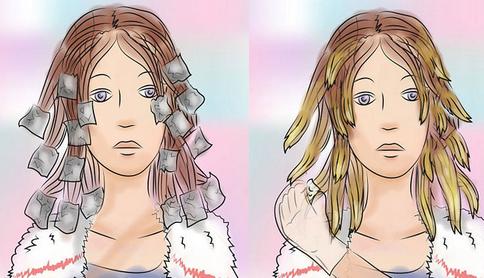
Staining order. First, mix the paint and oxidizing agent, then decide on the length. If you don’t have enough experience in this matter, we recommend painting for a short length, on short ends. In this case, the flaws will not be so obvious. We divide the hair into several strands and confidently apply the dye. To enhance the color contrast of the ends of the strands, wrap them in foil. If you need a smooth transition, you can leave your hair dyed in the air.
We leave the paint on for half an hour, then wash it off, dry it and evaluate the result. If the shade is not contrasting enough and the result is not satisfactory, repeat the procedure.
Preparing hair for coloring. We recommend that you take a hair strengthening course before dyeing. After all, any coloring harms your hair and dries it out. To do this, after washing your hair with shampoo, apply a nourishing mask along the entire length of your hair, not reaching the roots by about 3 cm. After 5 minutes, rinse off the mask with warm water. Or rinse your hair with infusions of medicinal herbs. Infusions of horsetail, oak bark, nettle, burdock root and calamus have proven themselves to be very effective.
Also, daily application of a few drops or flax seed oil to the ends has a good effect on the condition and growth of hair.
If you are doing the procedure on previously colored hair, take extra care and pamper it.
At home, getting a beautiful shade and at the same time keeping your hair healthy is very problematic. At best, the color will be almost invisible, at worst, you will dry out your already damaged hair even more.
Ombre is done for different hair lengths: short hair, medium length and long hair, as shown in photo 1, 5–6 .

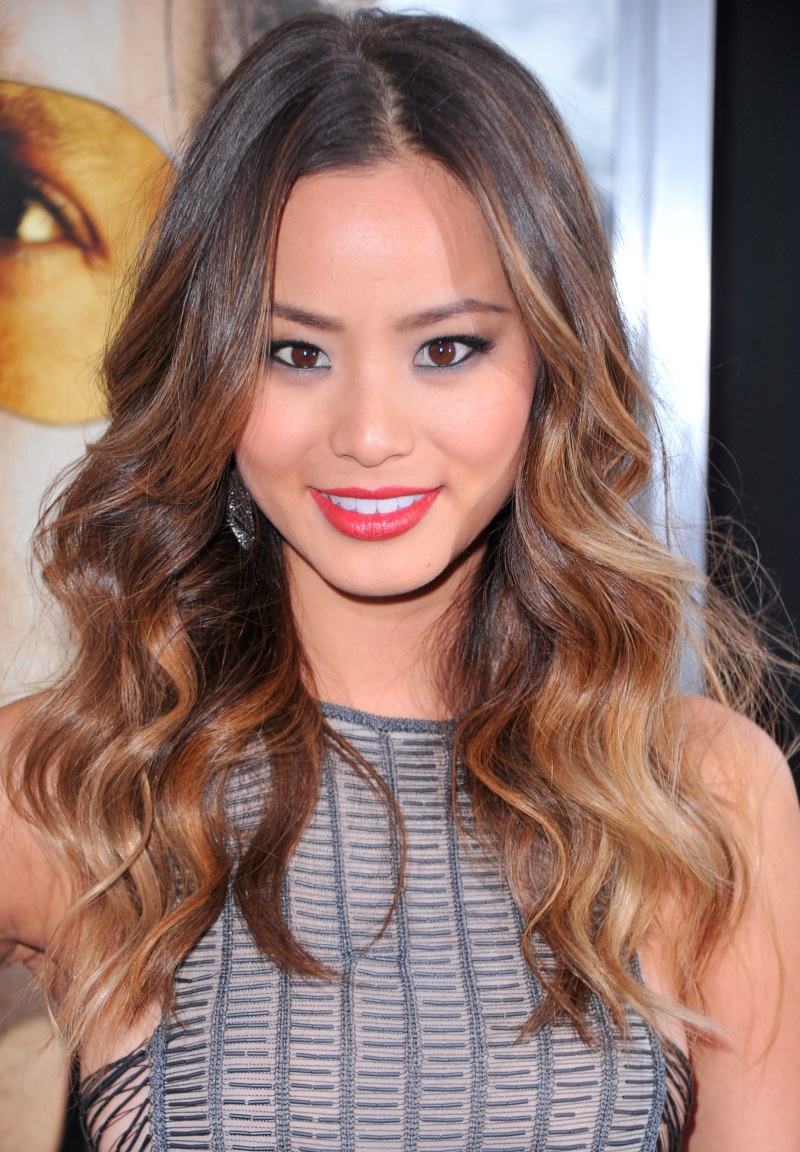
You can change without resorting to drastic and aggressive coloring using fashion technology called ombre. Previously, it was often used by dark-haired girls who dreamed of becoming lighter. But now blondes are deciding on this procedure, because then their curls begin to shine beautifully in the sun and look more interesting. Ombre on blonde hair also looks great and comes in different types.
Ombre for blonde hair
Ombre is a type of shadow coloring when smooth or clear transitions between two or more shades are created on the hair, which are called stretching. Moreover, for fair-haired people they use soft compounds, which, with further proper care, practically do not harm the hair.

Shadow coloring suits hair of any length. It can start close to the roots, from the middle, or touch only the ends. Why is this method of changing the image so popular among modern girls?

Firstly, ombre is great option for those who do not like and do not want to be a regular visitor to salons in order to touch up their roots every month. This technique allows you to contact a specialist for an update only after half a year.
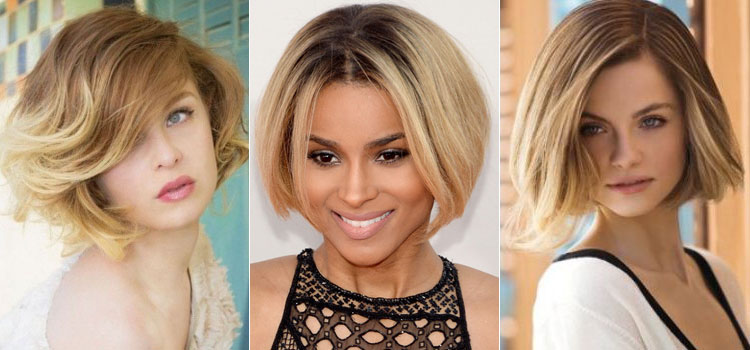
Secondly, not all hair is dyed, but only part of it, mainly the length and ends. In addition, the effect of burnt hair is now at the peak of popularity.
Thirdly, if the experiment is unsuccessful, you can cut the ends of the hair a little and tint the length to a new color.

The hair also gains visual volume and begins to shine in the light. But for chubby girls, ombre will be a real godsend, since the light strands make the face look thinner.
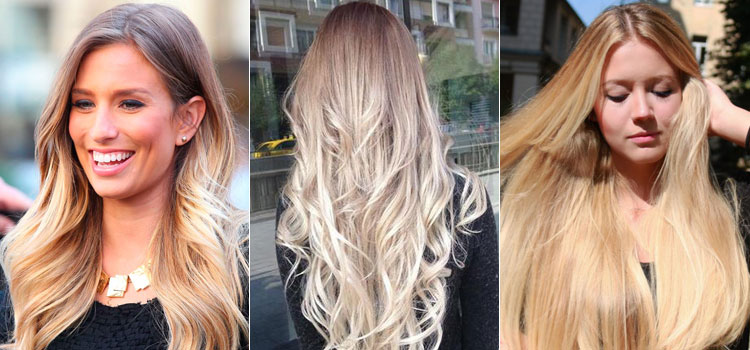
But against the backdrop of these advantages, there are also disadvantages. So, it is better not to subject weakened thin hair even to ombre, no matter how gentle it is. Also, an unsuccessful stretch may result in spots or unsightly stains, so repeated manipulations will be required.

Yes, and dyed hair requires more careful care than natural hair. You will need to constantly monitor the condition of the color so that it does not fade or turn yellow. To help, you will need a sufficient arsenal of restorative hair care products that will prevent it from looking faded and lifeless.

Types of ombre on blonde hair
Even in the case of very similar shades, you can create an ombre on blonde hair in different techniques execution. They may differ from each other not only in the transition options - smooth or clear, but also in color. That's why the girls different lengths and any shade of blonde will be able to choose the option that suits them.
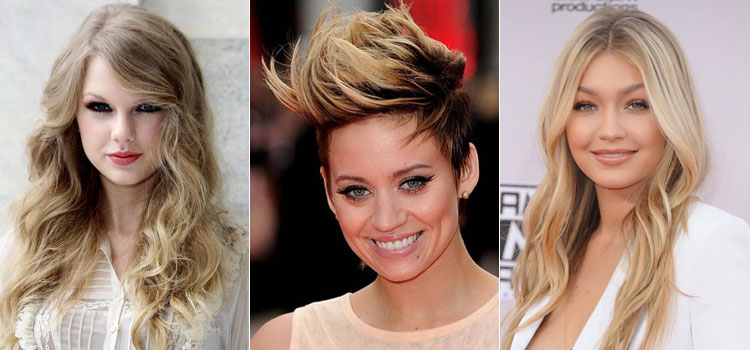
Classic ombre
This technique, suitable for literally any girl, uses two shades - natural and light. Stretching is done as smooth and natural as possible to create the effect of burnt strands. It is best if the transition begins just below the level of the tip of the nose.
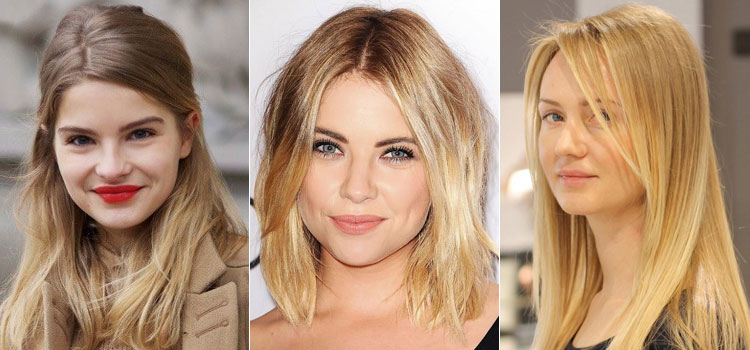
At the same time, it is not so easy for fair-haired people to achieve a beautiful transition, because the result can be almost invisible. One option to avoid this situation is to darken the root zone, which will negatively affect the condition of the curls. That's why classical technique acceptable for girls with light brown hair.
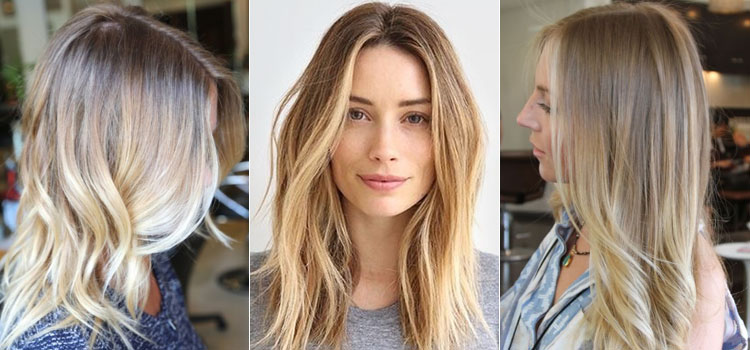
A classic ombre on blonde hair will best emphasize medium length and below. On short ones it is quite difficult to make a full-fledged high-quality color transition.

The effect of regrown roots
With this ombre coloring for light hair, the transition to the required shade will begin quite close to the roots - at the level of the cheekbones and temples. There are two options to achieve this ombre. The first is to lighten almost the entire length of the hair with a soft transition to the roots. The second is tinting the roots in a darker shade.
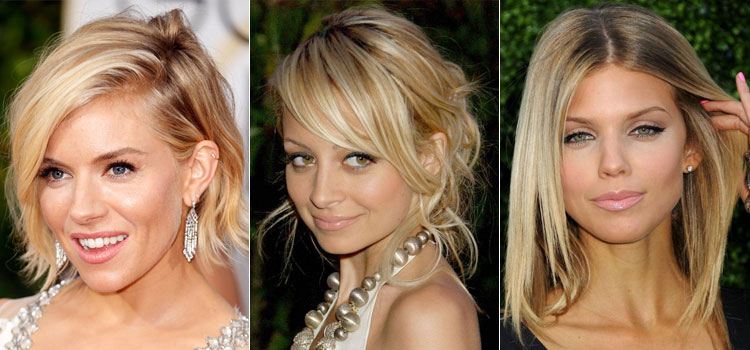
And if with the first option you can postpone visits to your master for a long time, then with the second this will not work. Growing light roots will have to be constantly darkened. Therefore, it is better to leave this option for a dark and rich blonde.

But this ombre will suit all haircuts, from the shortest to long curls, but it will look most organic on short and medium hairstyles.
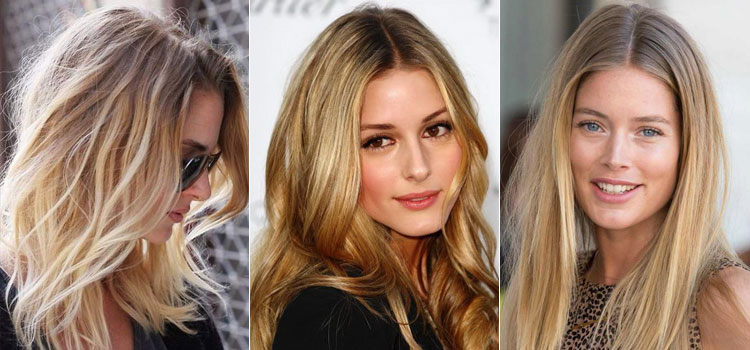
Triple ombre
Enough interesting technique ombre for blond hair, in which the root zone and ends are painted the same color, and the transition is presented in the form of a stripe in the middle. On light hair, this area can be further lightened or, conversely, slightly darkened.
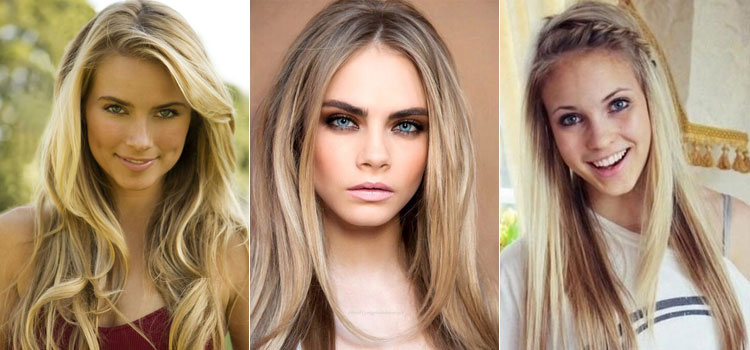
In this technique, as with other types of toning, it is important to achieve smooth transition when it will look most natural. There is no need to constantly touch up the roots here, since the border will slide down as it grows.
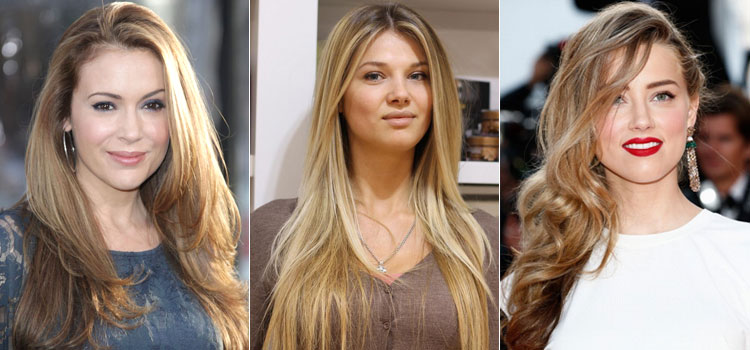
This coloring will look most natural on medium and long curly hair with a cascading haircut. Then the boundaries of the transitions will look even softer.

Color ombre
This ombre for blonde hair is also called DipDyeHair. It involves dyeing hair in unnatural shades. Popular ones include blue, lilac, purple and pink. Moreover, they can be bright or pastel.
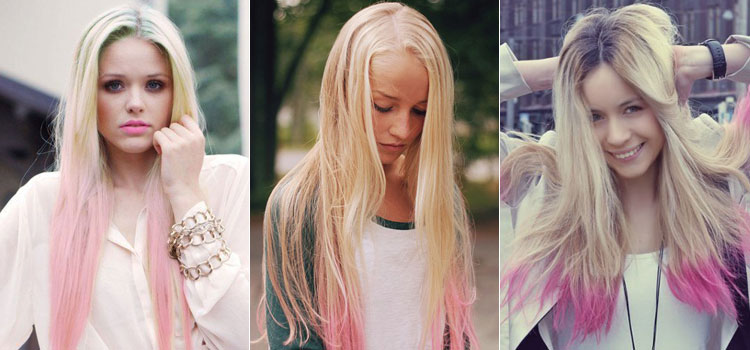
Exactly for blondes this technique it comes in handy, since the hair is not pre-lightened, and the colors look very rich and interesting. Long-haired girls can combine several colors, and for short haircuts It’s worth choosing one, but bright, that will attract attention.

It is worth noting that colored ombre on blond hair suits youth style, so it looks best on teenagers and young girls who are not burdened by a work dress code.
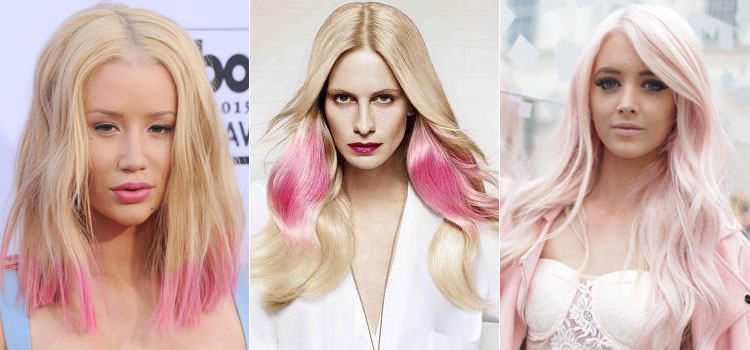
The mixture of several colors is very bright, but in this case the master must know exactly what he is doing in order for the result to please. This is exactly the amazing result that awaits you in the video below.
Reverse ombre
Here the usual classical technique is simply turned upside down. The dark color goes to the ends, while the root zone remains light.

If you start making the transition closer to the roots, you will get the effect of growing roots, and those around you will have the opinion that the girl has long needed to meet her master. Therefore, it is better to do stretching slightly below the middle of the length or closer to the ends.
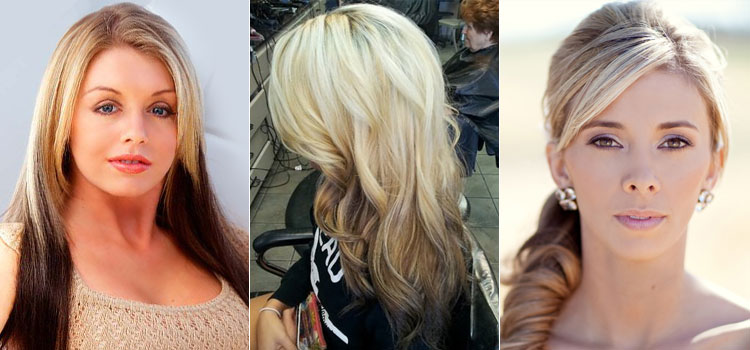
Among hairstyles, preference should be given to curled curls or voluminous styles. Natural light brown, chocolate, caramel and chestnut shades are suitable as dark colors. This ombre on blond hair will look best on young ladies with medium length curls. For those with short hair, it is extremely difficult to make the transition as smooth as possible.
![]()
Horizontal ombre
There is no smoothness and naturalness in this technique; there is a very clear boundary between natural and dyed colors. It is better not to do a horizontal ombre at the root zone or in the middle of the length of the hair, otherwise it will look strange, to put it mildly. It is better to carry out such a transition on the ends, which can be colored in a contrasting shade or a shade slightly closer to natural blonde. While not everyone understands this ombre, and it is not particularly popular, so people who like to attract attention decide to wear it.
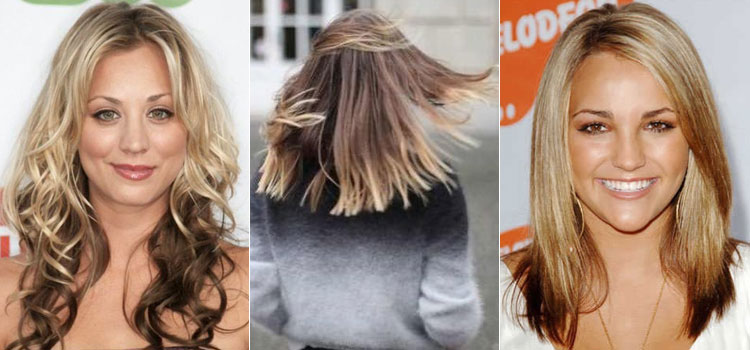
Horizontal ombre is suitable for shoulder-length or slightly shorter hairstyles. The ends can be painted any dark shade. And if you wish, you won’t mind cutting them off.
How to do ombre on blonde hair?
Performing the ombre technique on blonde hair requires certain skills; moreover, not all types of it can be easily accomplished by beginners. Some artists require weeks of training to achieve not only a beautiful shade, but also an even transition.

During the procedure, the pigment may not be absorbed, so the coloring may end up in spots. This matter must be approached with full responsibility.
It is not recommended to “stretch” damaged, porous hair, otherwise even the most gentle coloring composition will emphasize its structure. In addition, dark shades of blonde may require additional lightening, which will further aggravate the situation.
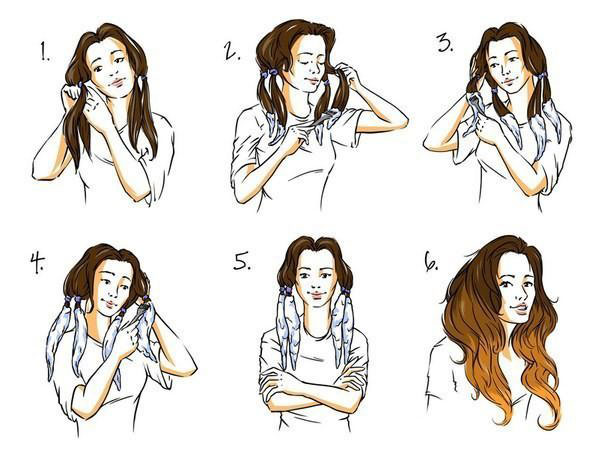
So, to perform high-quality ombre on blonde hair you will need:
- comb;
- coloring composition - ready-made or oxidizing agent together with lightening powder and paint for tinting;
- ceramic or glass containers in which the composition will be diluted;
- brush;
- gloves;
- shoulder cape;
- foil;
- hairpins
If the hair has a dark shade of blond or there is a desire to make the strands as light as possible, then coloring will be carried out in two main stages: lightening and tinting.
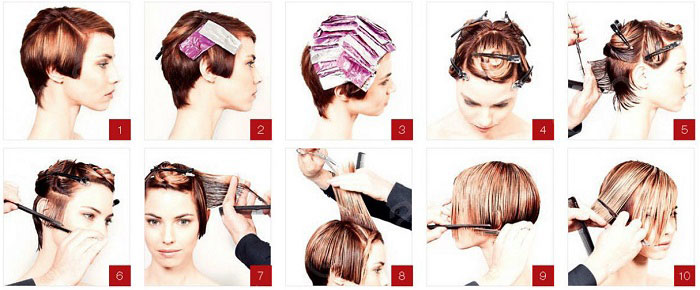
Lightening:
- According to the instructions, the oxidizer and powder are thoroughly mixed with each other in a bowl.
- The hair is divided into two horizontal parts in the middle of the hair. And then they are divided into vertical parts convenient for applying paint.
- The finished composition is evenly applied to the prepared strands. For example, with a classic ombre you need to lighten your hair starting from the middle of the length.
- After the time specified in the instructions has passed, the composition is washed off with water.
Then you can move on to tinting:
- Lightly towel-dried hair is thoroughly combed and divided into two parts - from ear to ear.
- You need to start tinting from the bottom layer. To do this, it is divided into separate strands.
- The selected strand is placed on foil and a toning agent is applied to it just above the level of the bleached hair. A brush creates a stretch. The higher you raise the paint, the smoother and more uniform the transition will be. The dyed strand is wrapped in foil.
- After the lower level you need to move on to the upper one. To do this, you need to part your hair.
- With this part of the hair you need to do the same as with the bottom.
- The front strands need to be given Special attention, here it is important to create a transition from the cheekbone line so that the effect is as natural as possible.
- To make the ends look the lightest, the tinting agent should be applied to dry hair.
- After the time specified in the instructions has passed, it is necessary to rinse the composition from the head, using a balm afterwards.
To quickly evaluate the option, the help of a hairdryer will come in handy. Then you need to use special cosmetics for colored and bleached hair.
It is recommended to perform ombre on blond hair with high-quality dyes that have good feedback. It’s even better to contact a specialist or ask someone who understands this type of coloring to help, because doing it yourself is quite difficult.
In the video below you will see how the master changes the image of a fair-haired girl with the help of this simple but stylish coloring.
The effect of regrown roots
The effect of regrown roots in fashion today. Many women who have struggled with this “beauty” for years find this difficult to understand. In fact, everything is not quite like that. After certain period passion for too white hair color, many representatives of the fairer sex, trying to comply with current fashion, began to switch to more natural shades. Regrown roots are an effect that came about naturally in the history of fashion.
What is special about the effect of regrown roots?
This style of highlighting does not necessarily imply the following situation: you dyed your hair blonde and got the desired effect. This is far from the case. In order to achieve nice option this color is needed salon procedure, which will most likely be carried out in two stages.
1) The effect of regrown roots is initially extended a few centimeters below. That is, your dark roots are painted with a shade similar to your native hair color, stretching it to a certain length. This should be followed by a smooth transition to the main color.
2) The second stage to achieve a beautiful effect of regrown roots is done if the transition turns out to be too sharp and conspicuous. To do this, you need to “stretch” the color even more in the most contrasting areas.
In any case, after such highlighting you will need to visit the salon quite often, since light hair dyed with darker dye quickly loses color and it looks untidy. But the effect of regrown roots is a good and fashionable way to grow long locks of natural color, without a “transition period”.

The difference between ombre and the effect of regrown roots
In essence, the difference between these two highlights is not that significant. Ombre involves two, or in rare cases more, colors, and the effect of regrown roots is done on approximately the same material, only the shades are swapped. In the first version it is lighter on top, in the second it is darker.

In this procedure, accuracy is very important, so that it looks both natural and impressive, you should contact a high-quality salon, where the specialist will be able to choose the mask of the desired color that is most loyal to your hair.
The effect of regrown roots will help you grow your hair and get out of this situation in an original way with minimal time spent walking around with unkempt and unattractive hair.
The effect of regrown roots is one of the most popular coloring techniques.
The effect of regrown roots: features and benefits
This coloring is called Hollywood. The method is based on ombre - two-color dyeing of strands, which has been successfully used since 2013.
During the dyeing process, the roots are made lighter or darker than the main color of the strands. Dark regrown roots in combination with light bronding look most impressive.
The essence of the technology is to stretch the color along the entire length, while leaving the roots in their natural color or darkening them slightly. Additionally, the tips can be painted in lighter colors. This method combines fashion trends of naturalness and naturalness.
Advantages:
- you can quickly refresh your hairstyle;
- suitable for women of any age, allows you to correct the oval of the face;
- the curls remain strong and healthy, since the roots are not affected during the hair coloring process;
- It’s easy to care for your hair, you can visit the salon less often.
There are few disadvantages to this technique.
Ombre is not suitable for very weak and dry hair; such coloring is difficult to do at home; the procedure in a salon is expensive

Natural coloring: Japanese hair dye
- More details
Who is suitable for coloring with the effect of regrown roots?
Not so long ago, overgrown roots were considered a sign of bad taste, and fashionistas sought to quickly get rid of this flaw in appearance. Today, regrown roots are one of the most popular trends in modern industry beauty.
Ombre allows you to shade natural beauty hair of any color, but two-tone dyeing looks most impressive on light and brown strands.
Two-tone coloring is chosen by women who are not ready for a radical change of image, but want to add something new to their usual image.
Ombre allows you to leave your natural hair color, but at the same time the strands are noticeably transformed
Who is suitable for coloring the effect of regrown roots? For all lovers of warm shades who find the usual blonde boring. This method allows you to grow long and thick hair, since the roots are not affected during the dyeing process.







